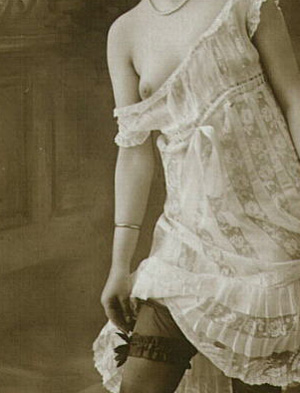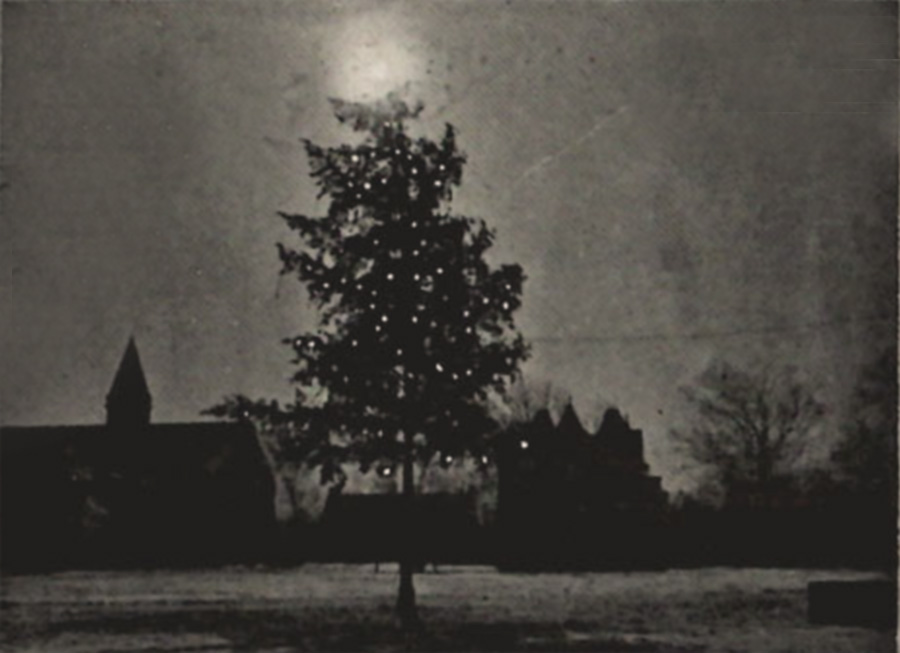THE GREAT WAR, 1917-1918
DISSENT
On May 31, 1917, local authorities, acting on guidance from the Federal government, raided 1323 Highland, here in the University District, and arrested a 24-year-old former Ohio State University student named Ammon Hennacy.
Hennacy’s crime: Printing a pamphlet opposing the world war.
Hennacy, like many Americans of his day, had been won over by the ideas of the socialist movement. Hennacy was a member of the anarcho-syndicalist International Workers of the World and saw common cause between workers in all countries. He saw the world war as an imperialist struggle between ancient despotisms grappling for land and power. The world war was not the working man’s fight. He and his fellow Wobblies and socialists saw the war as a sausage-grinder into which the youth of the world were being fed to fatten the ruling class.
For the crime of exercising his First Amendment right to free speech about a vital question of the day, Hennacy was sentenced to two-years of hard time in Federal prison. (Initially, prosecutors talked about the death penalty.) Drunk with war-fever, local media reviled him as a monster beyond redemption.
He survived. Many dissidents didn’t. Conditions were brutal and guards were inhuman and cruel.
Hennacy went on to become a proponent of Christian Anarchism which he wrote and spoke about extensively until his death in 1970. Hennacy remains one of the leading thinkers of that movement.
MILITARY TRAINING ON CAMPUS
The United States entered the war in April 1917 with a miniscule armed forces.
EMPTYING OUT
THE OHIO UNION
Then as now, the Ohio Union was the heart of campus. Students dined there. Speakers of interest spoke there. Football scores for away games were presented on an electric scoreboard there. Clubs and organizations met there. Socials, smokers, and dances were held there.
When military trainees came on campus, the Union was designated as a mess hall for them until a stand-alone mess could be constructed. By late July 1917, a typical day saw the Union kitchens feeding trainees 150 loaves of bread, 25 dozen rolls, 65 pies, 35 cases of milk, 1 barrel of potatoes, and 18 hams.
When students returned to campus in the fall, the Union tried to serve the 400-600 trainees and the student population but found it impossible to keep up. Staff levels at the Union had been eroded by the draft so the organization found itself scrambling to do more with less. Additions to the kitchens and dining hall were hastily erected but proved insufficient. The dining hall at the Union became military only in September 1917 and stayed that way, on and off, until the war's end.
A stand-alone mess for the trainees was finally completed in October 1918. The war ended less than a month later.
Aside from staffing shortages, the Union grappled with the wartime shortages the rest of America was facing as critical resources were diverted to the war effort. The Union observed sweetless Saturdays, meatless Mondays, and wheatless Wednesdays. The Union also turned off lights, turned down heat, and closed early to help conserve scarce coal.
SEX WORKERS AND ENEMY ALIENS
 |
As a military base, campus and the neighboring University District saw all sorts of restrictions during the war.
Students wandering campus late at night were challenged by armed sentries demanding "Halt! Who goes there?"
Citizens of Germany or its allies living in the University District or living or working on campus were banned. This created a problem for the University's German department as much of its faculty was banished from campus and forbidden to enter.
Puritanical military authorities, acting in concert with the US Justice Department, Congress, and local authorities banned all "disorderly houses" within five miles of any military base.
As Ohio State was a military base and a five-mile radius of the University included almost the entire city. The vice ban shutdown all red-light districts and brothels in the city.
Nearly 1,000 sex workers were escorted outside city limits by the authorities and told not to return to town. That's quite a few for a city with a population of 230,000. |
With campus essentially a military base, all sorts of strange restrictions were imposed.
THE FIRST CASUALTY
CAMP SHERMAN

On June 7, 1917, the US government announced the creation of Camp Sherman, a massive military training camp on 2,000 acres of farmland just north of Chillicothe OH.
In just 2 months, 14,000 laborers erected a city where only cornstalks had been before. Camp Sherman contained over 1300 buildings, a power plant, waterworks, a theater, a library, a fully staffed hospital, classrooms, churches, airstrips, cavernous kitchens, a POW camp, battlefield recreations, and more.
With 40,000 trainees from Ohio, West Virginia, and western Pennsylvania, the training camp dwarfed nearby Chillicothe, whose population at the time was only 16,000. Area workers, farmers, and merchants made out well supplying the camp’s needs. A small red-light district called “Frenchtown” sprang up on the camp’s doorstep to supply soldiers’ fleshier needs.
In late 1918, the Spanish influenza hit the camp hard. 6,000 sickened, Nearly 2,000 died. Overwhelmed with bodies, the Majestic Theater in Chillicothe was pressed into service as a makeshift morgue. Blood drained from bodies being embalmed was dumped into the alley beside the theater earning the moniker “Blood Alley.”
The camp was decommissioned in the early 1920s. Buildings were disassembled and the lumber, wire, pipes, etc. salvaged. A city built in 2 months disappeared almost as quickly. Almost no trace of it remains today.

OHIO STATE FOOTBALL
| |
For decades, the Buckeyes had fielded a mediocre team--able to beat Otterbein, Ohio Wesleyan, and usually Oberlin, but regularly humiliated by Michigan, Illinois, and Wisconsin. On campus, the football team played a distant second to the baseball team.
In 1916, that all changed. Behind a football superhero named Chic Harley, the Buckeyes fought their way to to an unbeaten season and its first Western Conference championship. The Buckeyes outscored their opponents nearly 10:1 and beat Oberlin 128-0, still a school record. For the first time, campus, the city, and the state went football crazy.
In April, the war began and talk immediately turned to the fate of the 1917 Buckeyes. Would its star players be drafted before the start of the season? Draft speculation continued throughout the season.
The 1917 Buckeyes were even more amazing than the 1916 Buckeyes. Ohio State rolled to an 8-0-1 season holding its all of its opponents to a combined 6 points! The Buckeyes easily repeated as Western Conference champions.
On November 29, Ohio State ended its season with a special game at Ohio Field against the GIs of Camp Sherman. The Camp Sherman team included a number of college stars but an unstoppable Ohio State defeated them regardless. All proceeds from the game were donated to the war effort.
On December 8, 1917, Chic joined the Army Air Corps and headed to Texas for training.
In the absence of Harley and the rest of its stars, the 1918 Buckeyes had a 3-3 season, shutting out Ohio Wesleyan, Denison, and Case and in turn getting shut-out by Illinois and Michigan, and only scoring a field goal against Wisconsin. Ohio State finished near the bottom of the Conference. |
COAL
All through the winter of 1917-18, the University was starved for coal.
CHRISTMAS 1917
In honor of those sons of The Ohio State University who have answered the call to the colors in the year 1917
This plaque, affixed to the Class of 1892 boulder (now in front of Bricker Hall), was dedicated December 19, 1917.
At a somber Christmas tree-lighting ceremony on a cold, dark December night, where President William Oxley Thompson compared the Great War to Christ's birth as greatest events in history, the plaque was dedicated to the Buckeyes who had already died in the war and the hundreds in training for or in route to the slaughter in France.

|